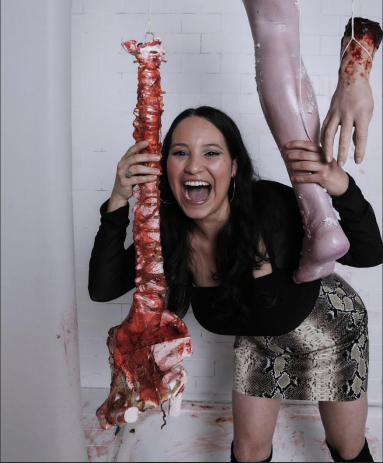The 10 Best David Cronenberg Horror Films, Ranked
Blood-sucking armpit tentacles, oozing flesh, gnarly orifices, head bursting, psychokinetic powers, sexual urges, and bubbling pus—ranked on this list are David Cronenberg’s 10 best horror films.

David Cronenberg, the king of body horror, has been hypnotizing audiences with his compelling storytelling and grotesque visuals for 55 years of his 81-year-old life. His career hasn’t been without controversy, polarizing critics and viewers alike, with concepts that are provocative, frightening, contemplative, mesmerizing, grotesque, erotic, and prophetic. Although the Canadian filmmaker has delved into other genres, like dramas and crime thrillers, sci-fi horror and violence of the body are where he truly excels.
The twisted genius’ signature themes include the ever-changing relationship between technology and mankind, disease, bodily transformation, the decay of the flesh, the depths of human sexuality, the repression of primal instincts, and capitalism and consumerism critique. He engages the physical and psychological in ways so bold and revolutionary that no other artist even comes close.
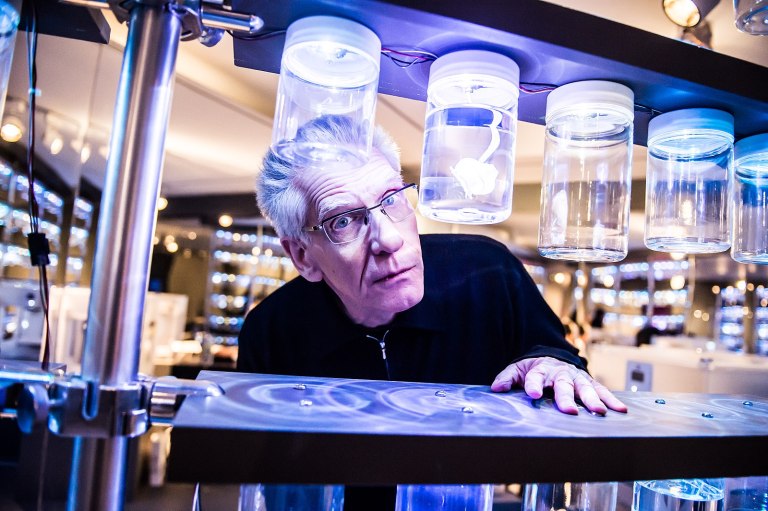
Cronenberg made his debut with the sci-fi movie Stereo in 1969. By 1975, he made a name for himself with the controversial Shivers. He’s responsible for some of the greatest and most iconic movies of the 1980s—Videodrome, The Fly, and Dead Ringers. In his 2022 project, Crimes of the Future, he continued to challenge the established order. Of the movie’s main character, he commented: “Tenser is really an avatar, a template or model of the artist who is actually giving everything he could give, opening himself up and giving what is the deepest, most intimate part of himself hidden inside. He’s offering it up to his audience and therefore being incredibly vulnerable to ridicule, to rejection, to misunderstanding, to anger. And to me, that is the model of a true, passionate artist.” Cronenberg’s most avid fans see the very master himself in those words.
Read on below to discover our ranking of Cronenberg’s 10 best horror movies—and long live the new flesh!
10. Shivers (1975)

Cronenberg’s role: Writer & Director
Shivers set the tone, horror, and ideas that Cronenberg would explore in future films. A reckless science experiment by a deranged doctor introduces phallic, slug-like parasites into a high-rise luxury apartment building. The writhing, bloody parasitic creatures quickly spread and turn the residents into mindless, sex-crazed zombies that can infect others. The bugs slither about and attack people, travel through drains, crawl out of and into mouths, protrude from stomachs, and are found in vomit. The disease causes everything from uncontrollable sexual urges to loss of inhibition to cannibalism to sexual violence to indulgence in the taboo.
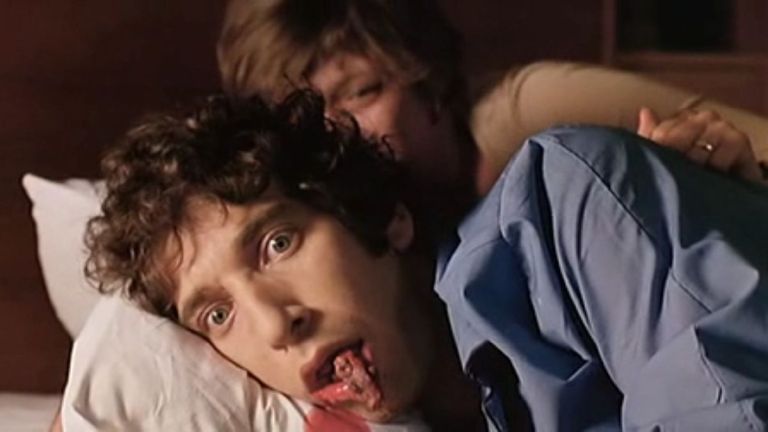
The film is utter depravity. It faced debate in the Parliament of Canada and censorship in some countries, turning Cronenberg into a controversial name and making it more difficult for him to obtain funding for subsequent movies. Although a low-budget flick, it doesn’t feel too confined by its limitations. Its single location setting elevates the tension, dread, and claustrophobia. The movie blends Cronenberg’s cerebral fascinations—the mutability of the human body, the relationship between science and humans, sexuality—with all the delicious pleasures of exploitation B-movies. Some might consider the movie too much of a slow-burn before it descends into insanity in its third act, however, it remains hypnotic and appalling. Shivers isn’t Cronenberg’s most intelligent or polished work, but it was a creation ideologically ahead of its time. The writer-director himself has said of the film, “Watching this movie is watching me learn how to make a movie.”
9. Rabid (1977)
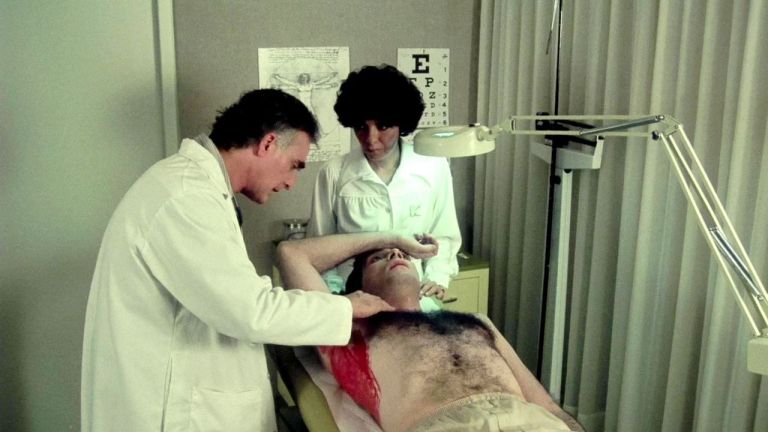
Cronenberg’s role: Writer & Director
Following the controversy of Shivers, Cronenberg let his imagination run rampant with a story about a vampiric armpit phallus. The movie fuses the vampire and zombie subgenres into a unique body horror. The late Marilyn Chambers gives a beautiful performance as Rose, a woman who undergoes an experimental skin-grafting procedure after a motorcycle accident with her boyfriend. The surgery causes her to develop an underarm orifice with a protruding blood-sucking stinger that infects those she attacks. Soon, Montreal is infested with rabid zombies who crave the flesh of others.
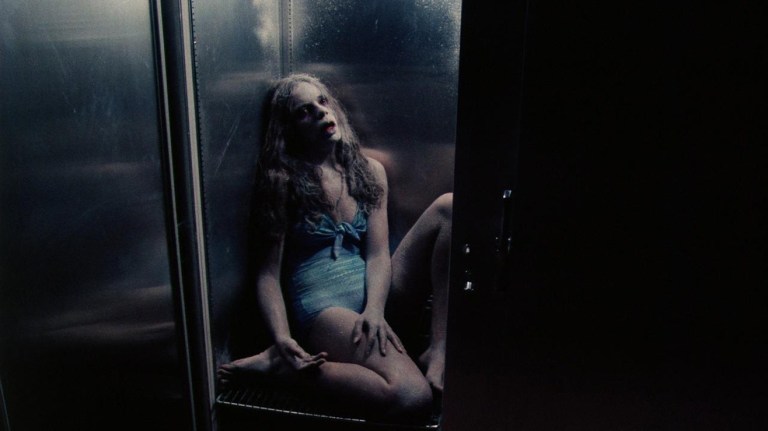
There’s only a couple of years between Shivers and Rabid, but even in that short amount of time, the writer-director evolves. Here, his style is more developed and refined. Stunning, haunting imagery is incorporated into the film and darkens the mood—the Quebec countryside, Rose walking the Montreal streets at night in her fur coat, a dead body in the freezer, the cold subway station, the city’s body disposal, and even Rose’s disgusting aperture. The movie feels more emotionally impactful and visceral than its predecessor, especially its dark ending, which leaves you feeling utterly empty and chilled to the core.
8. The Dead Zone (1983)
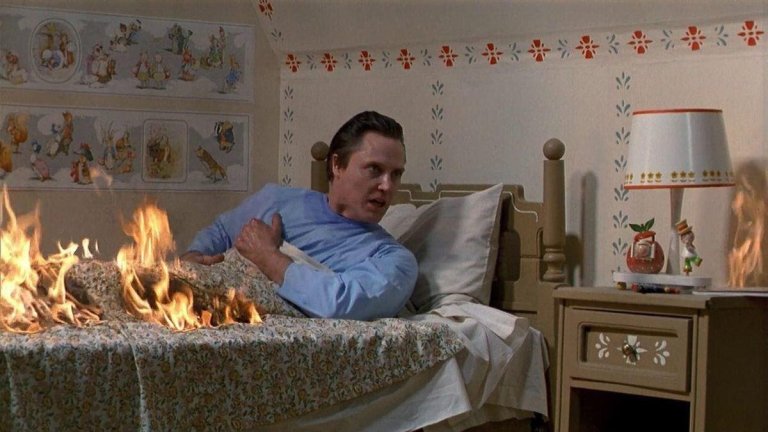
Cronenberg’s role: Director
The Dead Zone is an anomaly in an early filmography filled with disgusting body horror imagery, yet, the director’s style still shines. Cronenberg showcases his atmospheric prowess with a Maine winter setting that complements the bleak narrative and tone of the film. With a screenplay by Jeffrey Boam, it’s considered one of the best Stephen King adaptations. Christopher Walken gives a phenomenal performance as Johnny Smith, a schoolteacher who awakens from a five-year coma with psychic abilities. He has a prophetic vision that warns of an apocalyptic disaster if Greg Stillson (Martin Sheen), a shady businessman, is elected into political office.
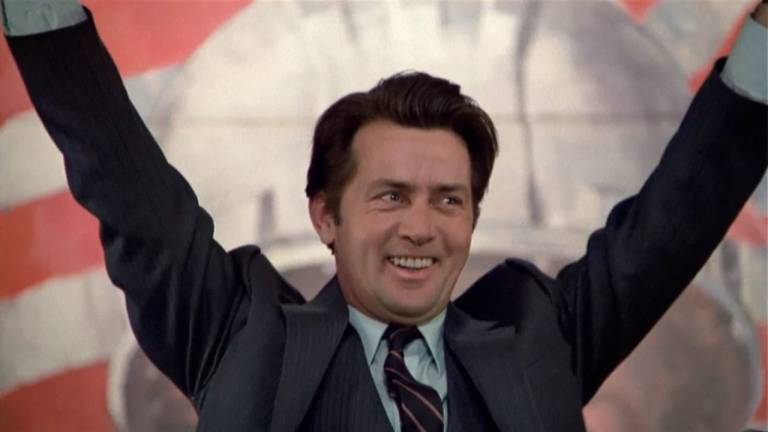
Although a fantastic movie, The Dead Zone ranks lower on this list because there isn’t one distinct horror. Instead, a few different plotlines are introduced, bringing forth new aims for the main character, making it hard to become too deeply invested in any of them. Still, it’s a suspenseful must-watch for any horror aficionado. The movie sheds light on the real life terror of fascism, but at its core remains a tale of human tragedy and self-sacrifice. King and Cronenberg intertwine in an indiscernible fashion. Looking back at making the film, Cronenberg shared, “I realized that there’s a kind of fusion of your sensibility with someone else’s when you’re making a film. It could be very productive, and you would come up with a creation that would be neither completely his, or hers, or your own.”
7. Scanners (1981)
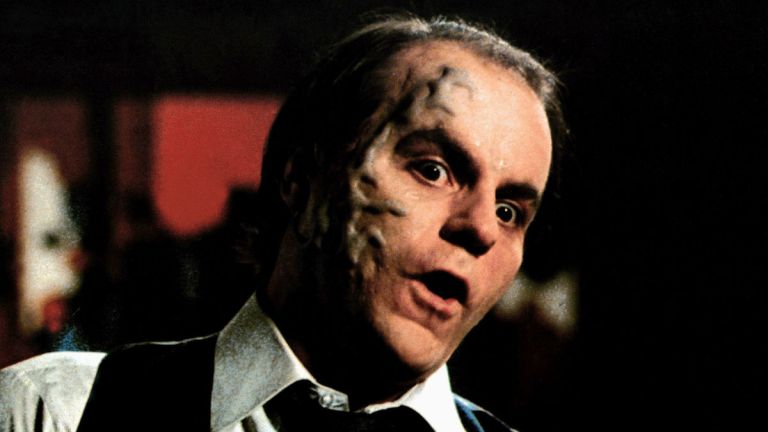
Cronenberg’s role: Writer & Director
Every respectable horror fan is familiar with *that* iconic head explosion scene that made cinematic history not even 15 minutes Scanners. Full of tension and suspense, the sci-fi horror plays out like a conspiracy thriller. The story, which is filled with twists and turns, focuses on “scanners,” people gifted with extraordinary telepathic and psychokinetic powers. One such scanner is vagrant Cameron Vale (Stephen Lack), who is recruited by a weaponry and security systems corporation called ConSec to eliminate rogue scanner Darryl Revok (Michael Ironside) whose aim is scanner world domination. It all culminates into one unforgettable, shocking showdown between the two characters. The end, which can be interpreted as ambiguous, leaves a lasting impact on the audience—one that can’t be shaken long after the movie is over.
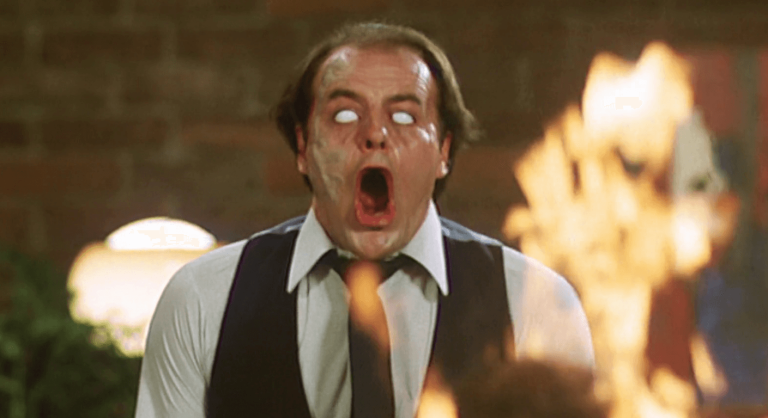
Cronenberg explores bioethics, eugenics, alienation, nature vs. nurture, the destruction of self, the surveillance state, and corporate malfeasance through a compelling plot and impressive practical effects. Scanners is a true visual and technical wonder, especially in its finale. You do, however, have to be willing to see past Lack’s unenthusiastic acting to appreciate the film, which might be the worst performance in Cronenberg’s filmography. The lead actor does deserve some grace, seeing as he’s more of a visual artist. Ironside makes up for it, carrying the film with his commanding performance.
6. eXistenZ (1999)
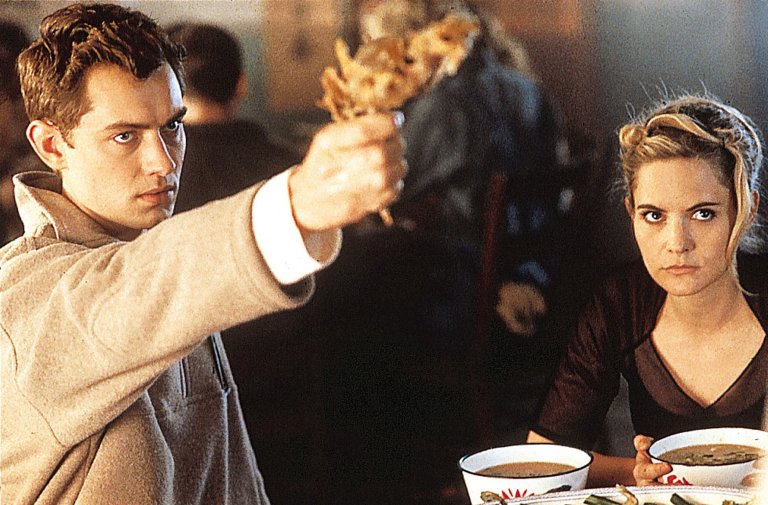
Cronenberg’s role: Writer & Director
In eXistenZ, Cronenberg makes you forget yourself and transports you into a different world—one in which the virtual gaming experience blurs indistinctly with reality, and where organic gaming devices harvested from mutated amphibians and reptiles exist. “Game Pods,” the flesh-and-blood consoles, are connected through an “UmbiCord,” a kind of umbilical cord, into a “bio-port,” a sphincter-like surgical hole at the user’s lower spine. Video game designer Allegra Geller (Jennifer Jason Leigh), inventor of the virtual game eXistenZ, goes on the run from assassins with security guard Ted Pikul (Jude Law), after an attempt on her life by “Realists,” members of an underground resistance movement against the “deforming” of reality by tech companies.

Nothing feels real in this immersive sci-fi horror that makes you wonder whether you’re living in a simulation. Everything feels like a dream. The writer-director gives a contemplative look at the merging of biology and technology, the extent our species is willing to go creating technology that challenges the boundaries of the human mind and body, how technological innovation changes our very existence, how we identify reality, and how corporations and capitalism keep us trapped. These intriguing ideas are brought to life through incredible storytelling and repulsive special effects. The movie is elevated by the chemistry between Leigh and Law, and has one of the best endings in Cronenberg filmography. Although not as visceral as his earlier works, eXistenZ is a disorienting, trippy experience that makes you question your very reality.
5. Crimes of the Future (2022)
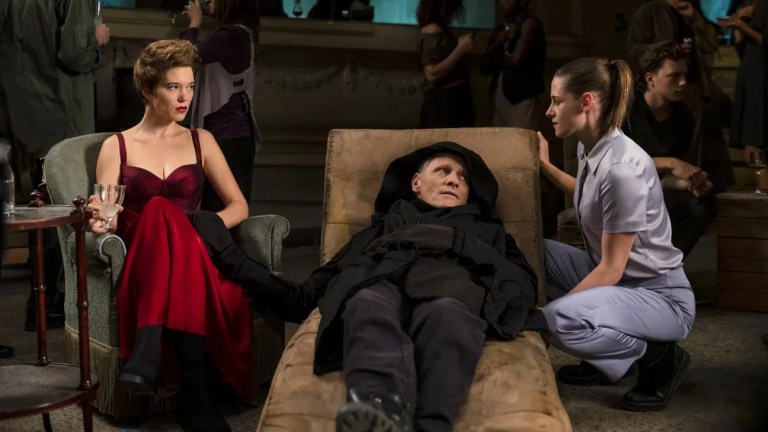
Cronenberg’s role: Writer & Director
Cronenberg made his long-awaited return to body horror with the thematically rich and disturbingly seductive Crimes of the Future. In the future he has imagined, humans have adapted and evolved to a synthetic environment. Some have developed the ability to eat and digest plastics. Many have become desensitized to pain. There are strange and spontaneous mutations in humans, including “neo-organ” formation. Performance artist Saul Tenser (Viggo Mortensen) publicly showcases his newly developed organs in an avant-garde surgical act with his partner Caprice (Léa Seydoux), while bureaucrats in the National Organ Registry become obsessed with their work.

Crimes of the Future is a thought-provoking exploration of evolution, biotechnology, the effects of technology and environmental changes on the human body, society’s beauty standards, how our sexual desires evolve as we do, and how we define what makes us human. The greater theme that filters through, however, is the creation and consumption of art. Cronenberg offers a contemplative meditation on the artistic process, the meaning we derive from art vs. that which was intended by its creator, the intimacy of art, the use of art to undermine or fuel social movements, and how art evolves alongside mankind. The arthouse horror may not pack the emotional punch of its predecessors, but it’s still deeply disturbing. Crimes of the Future is a masterpiece that makes you fear what’s to come for our species and society.
4. The Brood (1979)

Cronenberg’s role: Writer & Director
The Brood is an eerie tale about generational trauma, divorce, the manifestation of fear and aggression, unchecked psychological therapy, and the treatment of mental illness in women. Frank Caverth (Art Hindle) seeks to take full custody of his daughter Candice (Cindy Hinds) and end her visitation with her mother Nola (Samantha Eggar), who is institutionalized. Nola is being subjected to radical therapeutic techniques by her doctor through “psychoplasmics,” which involves manifesting and releasing trauma as physiological change. By the end of the film, the titular brood is revealed to have been spawned from Nola’s once-suppressed fury. The birthing process of the bloodthirsty, disfigured, belly button-less children is revealed towards the end of the film in one of the most blood-curdling and memorable scenes of the genre.
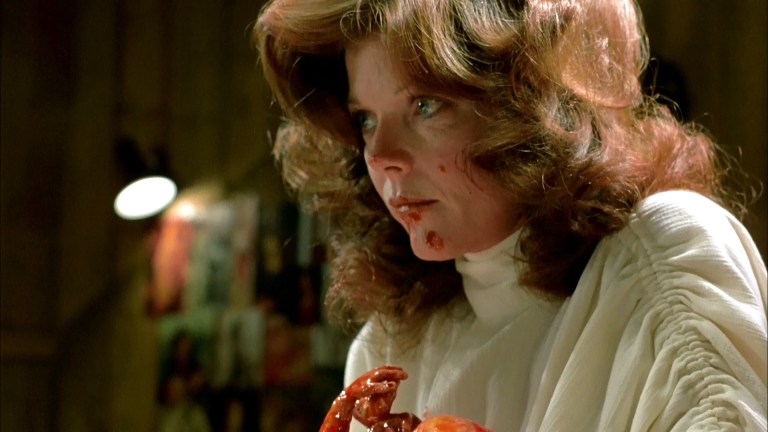
Cronenberg has referred to The Brood as “the most classic horror film” he has ever created. The movie has a deceptively simple narrative, but is anything but ordinary. The psychological body horror is a nightmare fueled by mental anguish and familial heartache. This is the writer-director’s most personal and intimate work. Cronenberg wrote the film in the aftermath of an incredibly bitter divorce from his first wife and a custody battle over their daughter. His anger, pain, and emotional turmoil pulsate from the screen—it’s uncomfortable how privy the audience is to his personal life and his innermost feelings. The Brood is his most vulnerable and passionate creation.
3. Dead Ringers (1988)
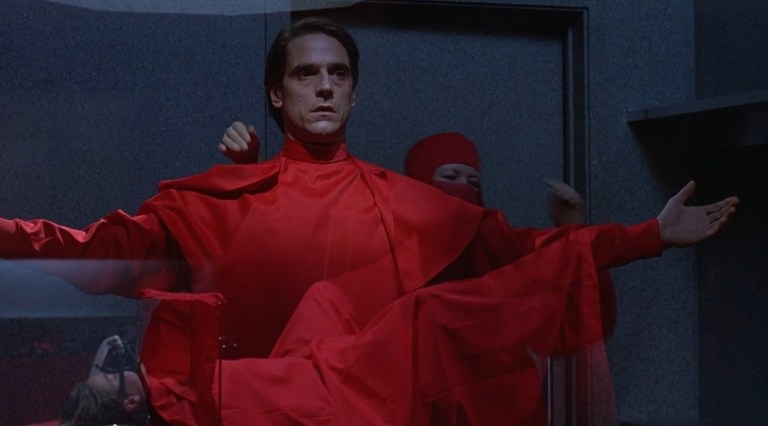
Cronenberg’s role: Co-Writer & Director
Here, the writer-director gives a uniquely disturbing exploration of the deterioration of the mind as opposed to flesh and body. The movie wouldn’t be what it is without the electric performance of Jeremy Irons in his dual role as identical twin gynecologists Elliot and Beverly Mantle. The brothers live a symbiotic life and frequently exchange identities. They share everything—a profession, a practice, award winning research, an apartment, women. The extroverted, devious Elliot seduces patients that come to the clinic. When he’s done with them, he passes them on to the meeker, more sensitive Beverly, while the women remain completely unaware. When Bev falls deeply in love with actress Claire Niveau (Geneviève Bujold), the siblings descend into obsession, manipulation, drug addiction, and psychosis.
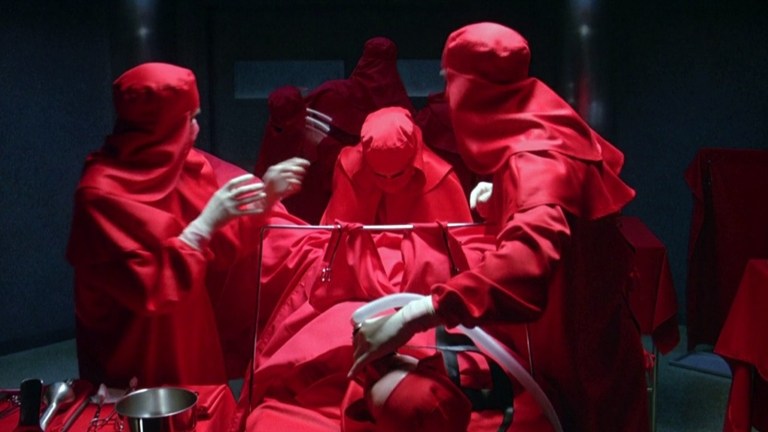
Cronenberg examines the dangers of relationship codependency and what happens when we depend on external forces for our sense of identity and fulfillment. Neither Mantle is strong enough to individually face the world on their own. This is especially true for Bev, who depends on Elliot for every social interaction. Instead of coming into his own once he develops a desire for experiences that are his and his alone, he becomes undone—he never learned to be whole without his brother. Similarly, Elliot’s demise is rooted in the incapability of imagining a life without being “synchronized” with Bev. Their individuality is so fractured that it’s impossible for each to define themselves. The film has a cold, sterile aesthetic with splashes of red that heightens the emptiness and dread evoked by the narrative. The only warmth is found in Claire’s apartment. As the twins spiral further, their space becomes increasingly messy and claustrophobic. The madness culminates in a final scene so dark and visceral it’s forever etched into memory. Dead Ringers is the absolute pinnacle of Cronenberg’s character studies.
2. The Fly (1986)
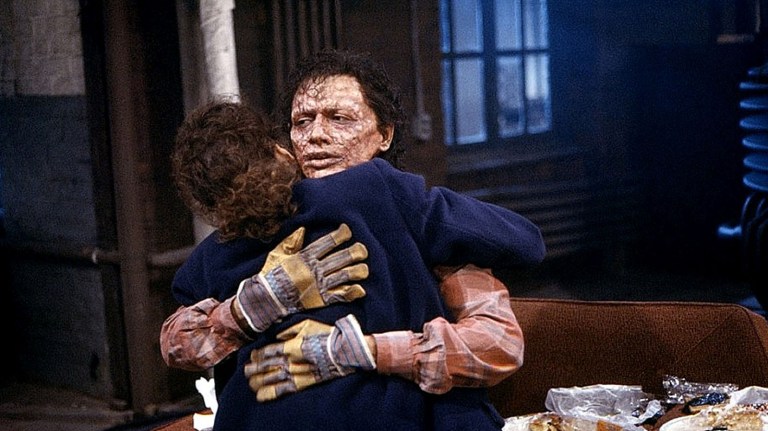
Cronenberg’s role: Co-Writer & Director
The Fly significantly differs from the original 1958 movie starring Vincent Price, and therefore, to the original short story by George Langelaan. David Cronenberg reinvents the tale into a body horror masterpiece vastly different in narrative—equal parts horrifying and heartbreaking. Jeff Goldblum plays the brilliant Seth Brundle, an eccentric scientist who introduces journalist Veronica “Ronnie” Quaife (Geena Davis) to his radical work on teleportation. The two quickly fall in love, but it goes awry when Brundle tests his teleportation technology on himself and a fly sneaks in with him into the telepod. As he slowly mutates into a fly-hybrid creature, Ronnie loses the man she has so deeply fallen for in body, mind, and spirit.
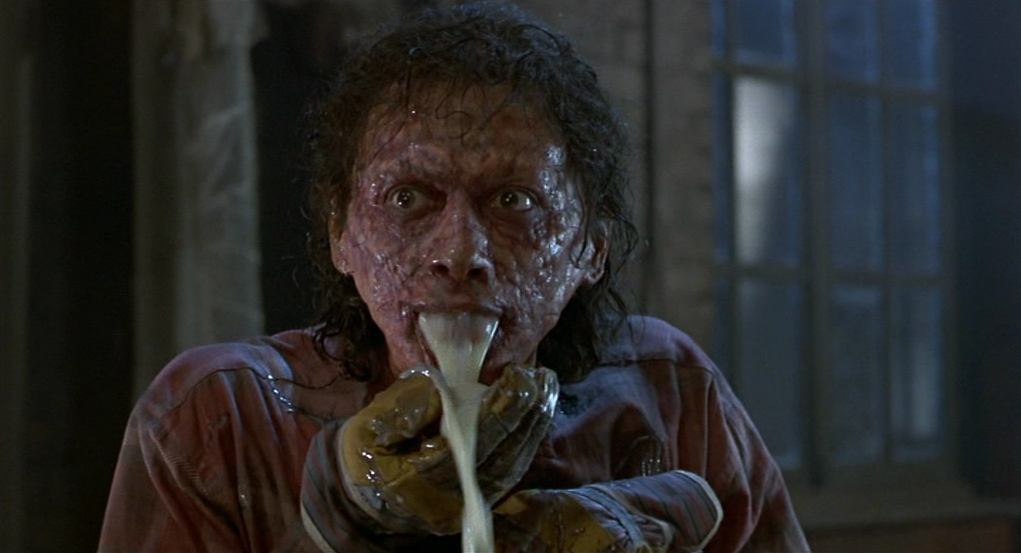
The tragic love story is peak Cronenbergian horror, examining heavy themes like aging, disease, and mortality through disgusting images of monstrosity, rot, and decay. The Fly functions as an allegory for what it feels like to have someone you love be condemned to suffering and death—to watch them completely transform and deteriorate through illness. It’s an empathetic film about the death of life and death of identity. The final scene where Brundlefly puts the gun up to his own head instead of attacking Ronnie is Cronenberg’s most devastating. In that moment, he illustrates the pain of having a loved one slip away knowing that they’re still in there somewhere, no matter how deep.
1. Videodrome (1983)
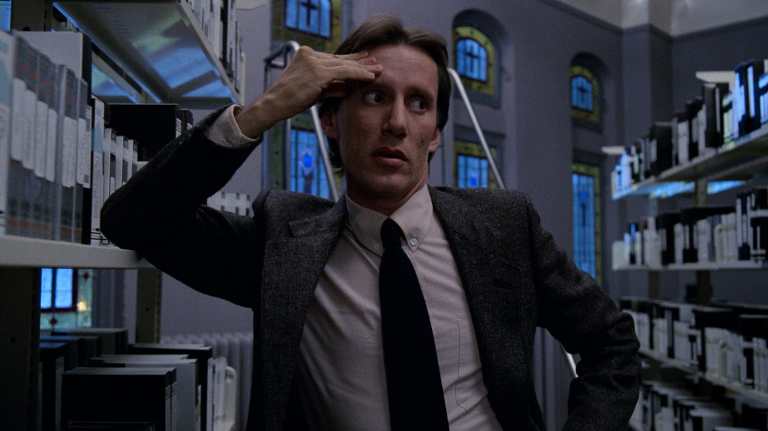
Cronenberg’s role: Writer & Director
Max Renn (James Woods), the president of a small sensationalist TV cable station, comes across a mysterious show called Videodrome that depicts realistic torture and murder. It is later revealed to be real and intended for mind control when his new girlfriend Nicki Brand (Deborah Harry) disappears after auditioning for Videodrome. After watching, Max experiences strange visions and hallucinations, and soon his flesh fuses with technology. Videodrome delivers some of the most iconic images in body horror—the TV set turning into a pulsating living being, the disgusting flesh gun, the VHS being inserted into the vaginal slit on Max’s stomach, a gaping body full of tumors.
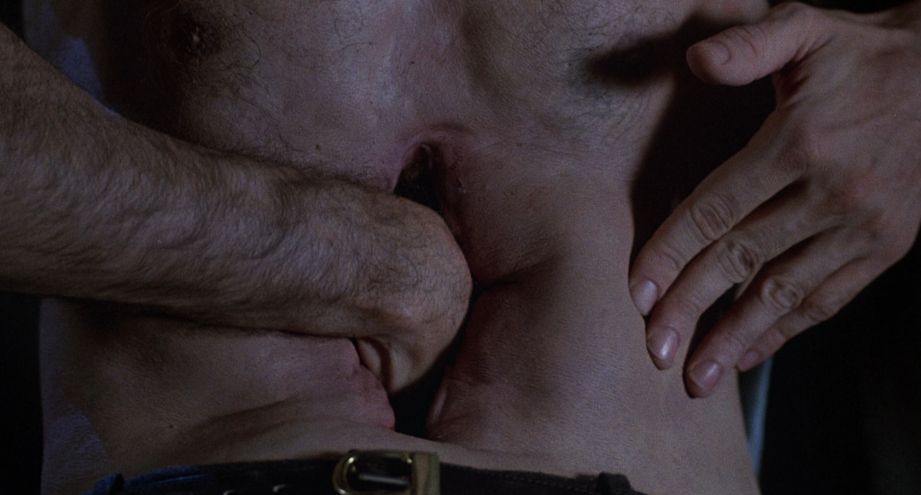
As Cronenberg’s most sophisticated and stylized work, Videodrome is a masterpiece of art visually, thematically, and metaphorically. It perfectly encapsulates everything Cronenberg—body horror, surrealism, the blurring of reality, sexuality, and the merging of technology and mankind. Videodrome is one of the most prophetic films in the genre. Cronenberg predicted human interaction with digital technology, the internet age, how we engage with social media, our digital identities, and smartphones becoming an extension of ourselves. Out of many themes explored are collective reality, the media’s manipulation of reality, mass media’s effect on the human psyche, desensitization to violence, fetishization of violence, and sadomasochism.
Further reading:
